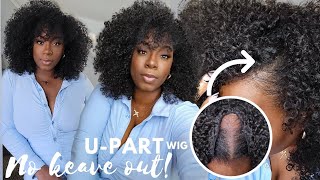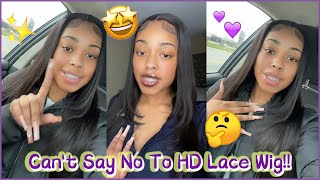Buying Your First Wig? Then You’ll Want to Read This
- Posted on 06 July, 2018
- Hot Topic
- By Stuart Cullip
For the wig novice – the first-time wig buyer – a crash course of sorts is what’s needed, and that’s exactly what you’re about to receive.
From a used old Volkswagen from the mid 90s to a beat-up amp for your first electric guitar, first buys aren’t just memorable, they’re also pretty darn tricky. Maybe not so much a first LP (what was yours?), but certainly so a first wig. Although in the case of your first ever human hair wig, we’d definitely recommend that – unlike that amp, Beetle or scratchy Jesus Jones album – it comes unused.
But just what should you know about the world of wigs before entering the fray? There is without question much to consider, from budget, styles, shapes and lengths, to materials, structures and brands. We’re not going to attempt to give you the full-on comprehensive guide here – that would be misleading.
Expert perukers – otherwise known as nob thatchers or chiffoniers (or wigmakers to you and I) – have years of experience handling beautifully constructed hairpieces. They understand the underlying craftsmanship required; the ins and outs of what makes a wig work, for who and why. But for the wig novice – the first-time wig buyer – a crash course of sorts is what’s needed, and that’s exactly what you’re about to receive:
Human hair or synthetic wig?
First off, you should understand the difference between a human hair wig and a synthetic wig. You can probably imagine the key matter defining these two types of wig, but what does that mean in practical terms?
Well, human hair wigs have a higher ceiling in terms of potential quality. That’s not to say of course that all human hair wigs are fantastic quality, nor that they are all ‘better’ than synthetic varieties, but it does mean that the very best wigs out there are human hair wigs.
Also know that human hair wigs require far more love and attention – they’re made of real human hair, after all, and they’ll want regular shampooing and conditioning, they’ll need to be hung properly, and there’s greater risk of them losing their natural sheen should they not receive the treatment they deserve. That said, human hair wigs can also last longer than synthetic wigs, and they can also look absolutely fantastic.
Don’t be fooled into thinking, however, that synthetic wigs can’t also look great. In fact, we’ve seen huge improvements in the quality of synthetic materials over the last 15 years, and today’s synthetic wigs are, at their best, superb. They also – generally – come a little cheaper than real hair wigs, and as such, are perfect for fun, frivolous occasions, a quick costume change, a girls’ night out. But if you wish to hide the fact that you’re wearing a wig, you’ll probably want one made with human hair.
Wig construction
Much goes into the various ways in which a human hair wig can be put together, and how it is made can have a large bearing on how it should be worn. Certain wig constructions are ideal for certain looks, which means you should consider how you’ll most likely wish to have your hairstyle before settling on a wig.
Here are the three main kinds of wig construction that will influence how that wig can be styled, and therefore for whom it is most suitable:
Hand Tied wigs
A 100% hand tied wig allows the most versatility in terms of styling, since they can be combed in any direction. This has other advantages – for example, the fact of that freedom of movement means that on a windy day, your hand tied wig will have hair blowing about just like the real thing. Expect your hand tied wigs to be pleasingly lightweight, soft and comfortable to wear. Perfect for routine days, very natural-looking, and easy-going on sensitive scalps.
Lace front
Lace front wigs can produce stunningly natural looks for those that like to pull their hair away from the face, and so exposing the hairline. The lace front delicately blends in to your face to give the effect of a completely natural hairline – so perfect for up-dos. There are clever tricks you can employ to dab a little extra tone into the lace front, like using a used tea bag, which is handy for matching your skin tone to the hairpiece.
Double monofilament top
The double layer that is used at the base of these constructions means that the individual hairs that make up the wig protrude from the cap – the ‘scalp’ of the wig – in a fantastically natural way, making them great for partings. Double monofilament tops are very flexible and extremely natural-looking.
Now that you’ve had your crash course in wigs, you can start looking around with a little more knowledge in your armoury. Happy hunting!




